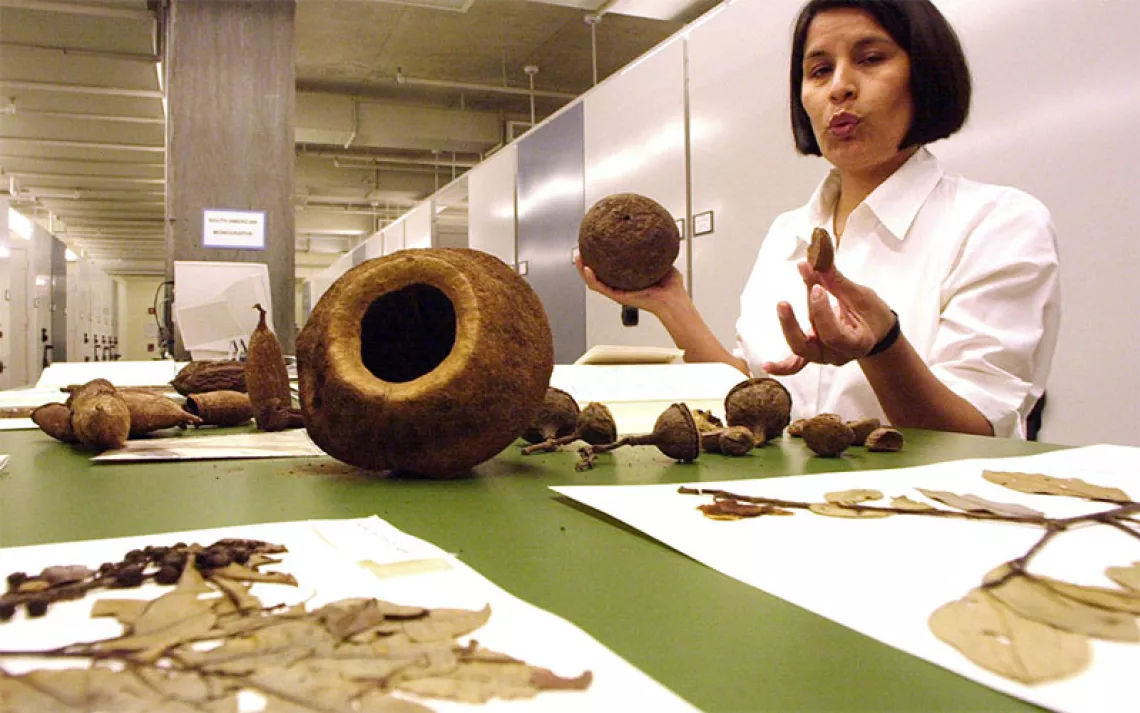Some Forests Survive Drought by “Tree Fracking”
Researchers find significant amounts of water hidden in underground rock

Illustration courtesy of University of Texas at Austin Jackson School of Geosciences
The drought that punished California from 2010 to 2015 killed more than 100 million trees, but some in Northern California’s Mendocino County survived just fine. How did they do it? Researchers from the University of Texas at Austin and the University of California, Berkeley, have found that—just like humans fracking oil and gas deposits in shale—tree roots are able to access substantial quantities of water stored in weathered bedrock.
Daniella Rempe, an assistant professor in Department of Geological Sciences at UT Austin, made the discovery through what Rempe calls a “brute force approach”—by drilling nine wells into the bedrock on steep, forested hill slopes in Mendocino County and inserting neutron probes, a very precise tool widely used in petroleum drilling that measures water in an area by detecting hydrogen.
“Before this we really didn't know whether the fractured rock could store appreciable amounts of water at all,” she says. “We knew that trees could use water from rocks, but we didn't know how significant it was. We're still not really sure where in the rock exactly the water is held; you can imagine that it's inside fractures with soil-like material that originates from weathering of the rock, but we're not sure."
However it's held, the amount of water is significant—4 to 21 inches of rock moisture was found in the test wells. Importantly, the amount of moisture held by the rock remains stable year over year, topping up whether winter rains are plentiful or scanty, with the remainder draining off into the groundwater table. “It doesn't matter how much it rains in the winter, rock moisture builds up to the same maximum values,” says Rempe. “That leads to the same amount of water every summer that's available for use by trees.”
The study, published in the journal PNAS, raises the intriguing possibility that the presence (or absence) of such water-bearing rock layers may play a role in what species of tree a particular area can sustain. The hypothesis, says Rempe, “is that what controlled the response of these species to drought was this kind of sustained water source.” The findings could also have application to climate science, since current climate and hydrological models don't account for the amount of moisture held in rocks. Her study, says Rempe, along with others being carried out in Central Texas, “are just the tip of the iceberg of trying to figure out how exactly rock controls the aboveground.”
 The Magazine of The Sierra Club
The Magazine of The Sierra Club



